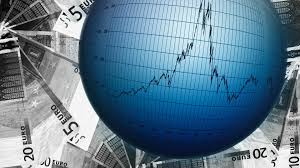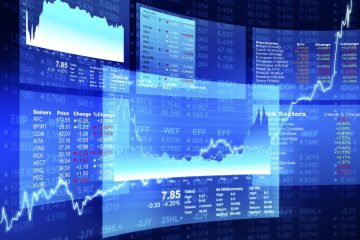More market volatility seems likely

“FASTEN your seat belts. It’s going to be a bumpy night.” Those famous lines of Bette Davis in “All About Eve” may turn out to be the motto for the markets in 2018. After the “volatility vortex” in February, sparked by concerns about inflation, markets have thrown a “tariff tantrum” after President Donald Trump sparked fears of a trade war with China.
In February stocks sank on heavy hints of American levies on imported steel and aluminium. The prospect of trade measures against China, signalled on March 22nd, again hit shares. Then reports that China and America were making progress in trade talks caused the S&P 500 index to rise by 2.7% on March 26th, its best day since August 2015. It promptly fell again by 1.7% the next day (see chart).
Further volatility seems likely, not least after the appointment of John Bolton, an ultra-hawk on foreign policy, as Mr Trump’s national security adviser. That raises the possibility of increased tension with North Korea, despite the recent suggestion of a summit between Mr Trump and Kim Jong Un. The changes of tone from the White House have been so rapid that you might think policy is being set by Twoface, a Batman villain, whose decisions are controlled by the toss of a coin.
Last year was a bumper one for global stockmarkets. Investors shook off pessimism about growth, which had led to many earnest discussions about “secular stagnation”, and enthused instead that the world was experiencing a period of synchronised economic expansion. Tax cuts passed by America’s Congress in December were the icing on the cake, boosting both the American economy and payouts to the shareholders of multinational firms.
But this year has seen a number of worries come to the fore. “The entire complexion of this stockmarket is changing before our eyes,” says David Rosenberg, a strategist at Gluskin Sheff, a Canadian wealth-management firm. Central banks are withdrawing some of the monetary stimulus that has supported the market rally since 2009. And economic data have not been quite as positive as before. Citigroup’s “surprise” index, which is based on whether actual numbers turn out to be better or worse than forecast ones, has dropped back from the high levels reached at the end of last year. The price of copper, a commodity that is particularly sensitive to economic conditions, has fallen by 9% so far this year.
The prospect of further interest-rate increases has taken its toll on bank stocks, with America’s KBW NASDAQ Bank index dropping by 8% in the week to March 23rd. The technology sector has also taken a hit. Led by the FAANGs (Facebook, Apple, Amazon, Netflix and Google), the S&P 500 Information Technology index managed a five-year annualised return of 18.5%. But controversy over the use of Facebook data in the 2016 presidential election prompted a reversal. Fears of extra regulation caused more losses on March 27th. The index has dropped by 5.2% so far in March.
All this has taken a toll on sentiment. The latest survey of investors and strategists by Absolute Strategy Research (ASR), a consultancy, shows that they have become less confident about the economy. The survey responses generate only a 43% probability of the business cycle being stronger a year from now. That is down from 55% in the first quarter of 2017.
Investors think there is a 58% probability that equities will be higher a year from now. But that is not particularly optimistic. According to the Barclays CapitalEquity-Gilt Study, American shares rose in 64% of the years since 1926. And investors expect a more testing economic climate. Both inflation and bond yields are forecast to rise over the next 12 months.
The ten-year Treasury-bond yield has already risen from 2.4% at the start of the year to 2.79%, in part because the market expects America’s tax cuts to lead to a lot more debt being issued. It is not clear how far yields can rise before they start to have a palpable economic impact. “Debt becomes more of a problem with slower growth and higher interest rates,” says David Bowers of ASR.
As a sign of tightening liquidity conditions, the ASR team also points out that the real growth rate of the global M1money-supply measure has slowed sharply, from more than 9% to less than 4%, in recent months. Another warning sign is that the gap between short-term and long-term interest rates has shrunk. In the past, a flatter yield curve has signalled an impending economic slowdown. These signals may turn out to be false alarms. But even so, investors would be forgiven for checking their seat belts.
Economist.com/blogs/buttonwood
This article appeared in the Finance and economics section of the print edition under the headline “Buckle up”

